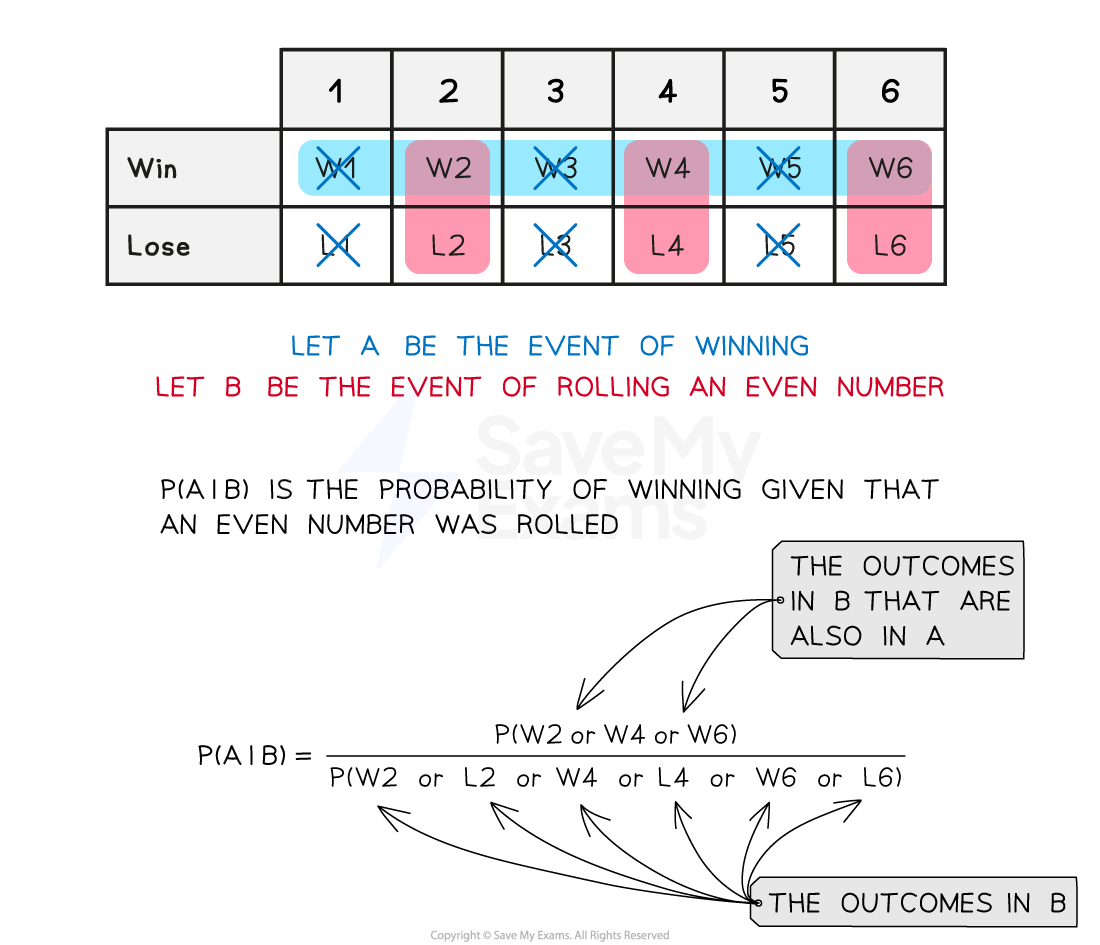Conditional Probability (College Board AP® Statistics): Study Guide
Conditional probability
What is a conditional probability?
A conditional probability is the probability that an event occurs given that another event has already occurred
The notation
is used to denote the probability of event
occurring given that
has occurred
Note that in general
A common use of conditional probability is when a sample is taken without replacement
If a unit is not replaced when sampled, then the total number of units decreases by 1 each time a unit is taken
Examiner Tips and Tricks
Look out for the phrase "given that" in an exam question. This phrase normally indicates that a conditional probability is needed.
Worked Example
There are 10 same-sized counters in a bag, 4 of them are red. A counter is chosen at random and it is not replaced. A second counter is then chosen at random.
What is the probability that the second counter is red, given that the first counter is red?
Answer:
Initially, there are 10 counters: 4 are red and 6 are not red
It is given that a red counter is chosen first and not replaced
This means there are now 9 counters remaining: 3 are red and 6 are not red
Find the probability that the second counter is red given that the first counter is red by dividing the number of remaining red counters by the total number of remaining counters
The probability can be simplified
Given that the first counter is red, the probability that the second counter is red is
How do I calculate a conditional probability for any two events?
To find the probability of event
given that event
has occurred
Restrict the sample space to just the outcomes in event
Ignore any outcomes that are not in event
Identify which of the remaining events are also in event
Divide the probability of any of these outcomes occurring by the probability that event
occurs

The formula for conditional probability is
This formula is given in the exam
Examiner Tips and Tricks
A common mistake that students make is using instead of
on the numerator of the fraction. If
has already occurred then you essentially want to ignore any outcomes that are not in
.
Worked Example
In a school, a particular group of students are required to choose one math subject (Calculus or Statistics) and one language (French or Spanish).
17% of students chose Calculus and French, whereas 23% of students chose Calculus and Spanish. 25% of students chose Statistics and French and 35% of students chose Statistics and Spanish.
What is the probability that a randomly selected student chose Statistics, given that they also chose Spanish?
Answer:
The required probability is
The conditional probability formula is
is given in the question but
is not
Find by adding together the probabilities of the combinations involving Spanish
Substitute the relevant probabilities into the conditional probability formula
Given that a randomly selected student chose Spanish, the probability that they also chose Statistics is (roughly 0.603)

Unlock more, it's free!
Did this page help you?